This post may contain affiliate links, which means that I may receive a commission if you make a purchase using these links.
Welcome to the 2021 sustainability series. This blog post series will show you how to upgrade your products and lifestyle to be more sustainable, room by room of your house. If saving money, using less, and incorporating sustainable practices into your daily life are part of your New Years resolutions, this series is for you.
In case you missed it, we already talked about upgrading your bathroom to be more sustainable.
Let’s move on to the kitchen. It’s easy to get stuck in the cycle of throwing away plastic containers and replacing paper towels rolls every week, but these kitchen habits are contributing to deforestation and filling landfills. Instead, invest in sustainable options that can save you money in the kitchen and save the environment.
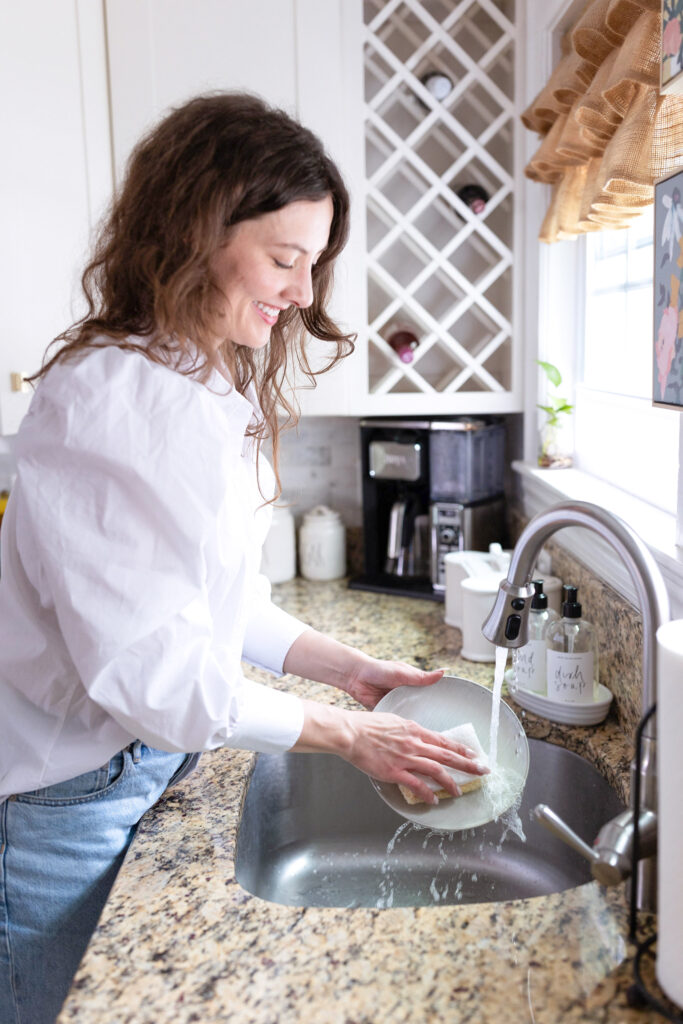
1) Reusable sponge
I only recently discovered the beauty of the reusable, washable sponge when my partner’s mom bought us a pack. Now it seems obvious! Stop buying those thin polyester sponges that need to get thrown out every couple weeks, and invest in reusable cloth sponges that can be thrown in the wash.
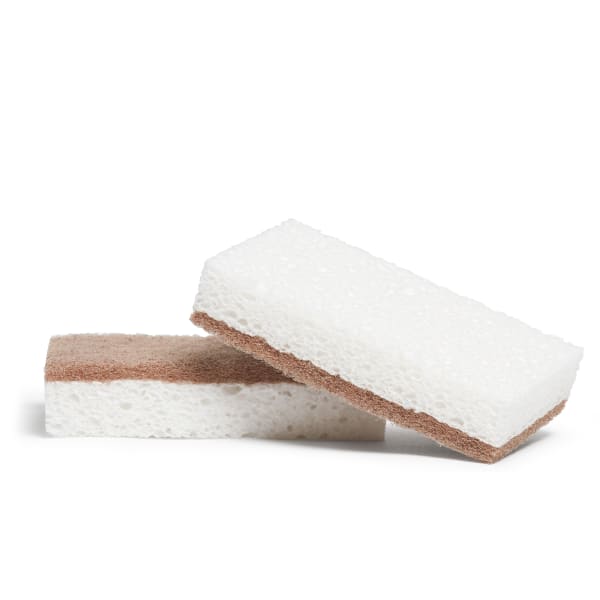

If a reusable sponge isn’t for you, try the next best thing and purchase sponges made from recycled and natural materials like these walnut scrubber sponges from Grove Collaborative. The scrubber side is made from walnut shells and recycled plastic fibers.
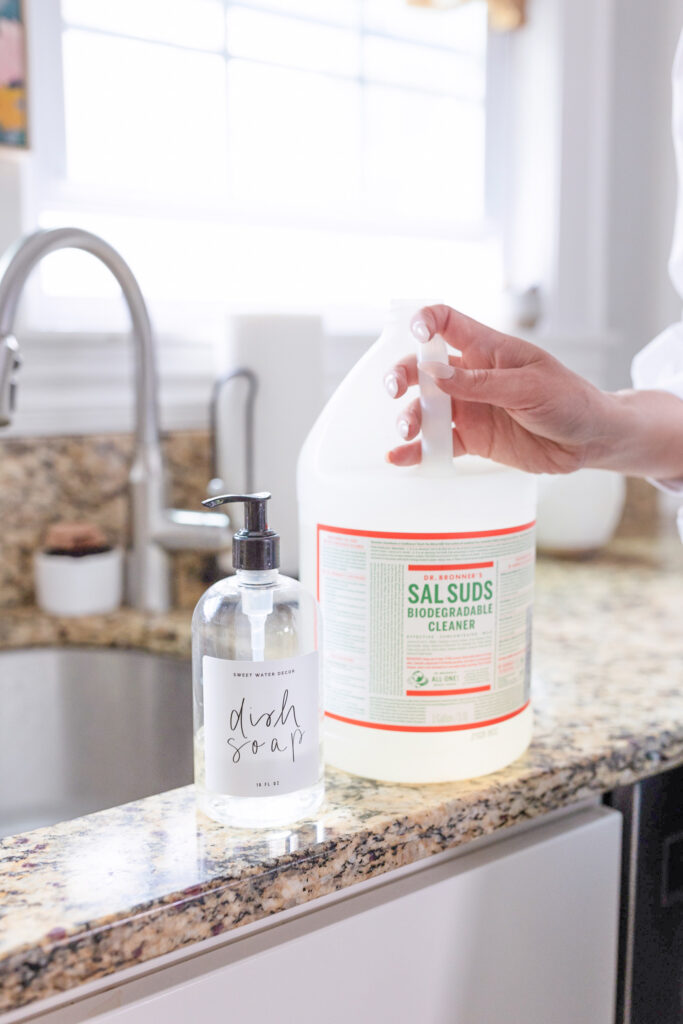

2) Refillable dish soap
Instead of buying a new plastic bottle of dish soap every time you run out, thrift or buy a soap dispenser that you like and refill from there. I refill with Dr. Bronner’s Sal Suds and buy by the gallon.
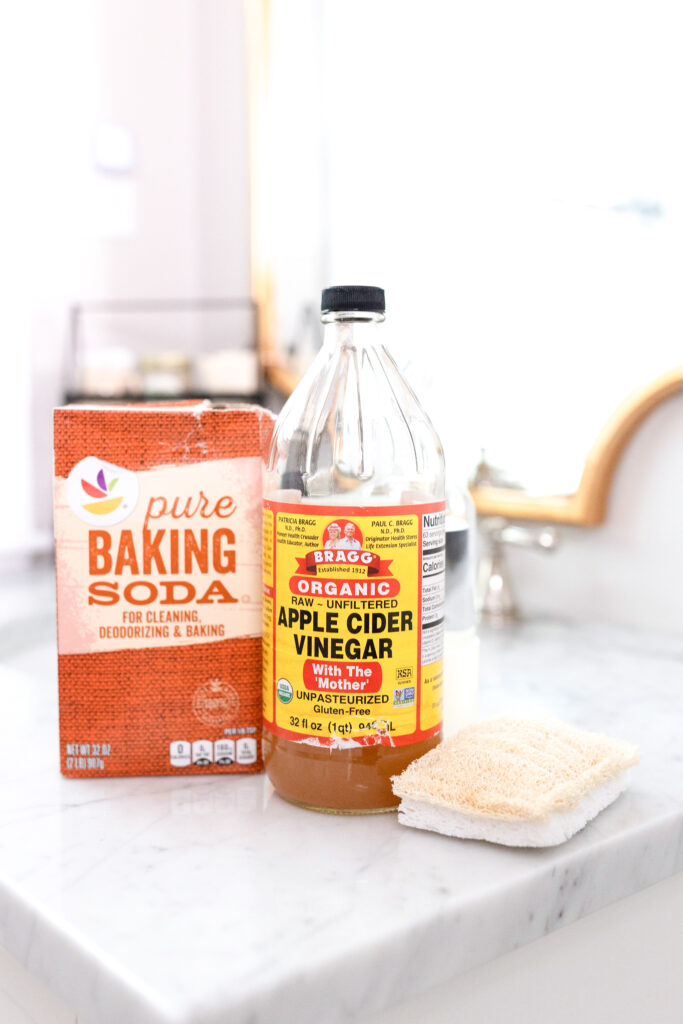

3) Sink scrub and deodorizer
Baking soda and vinegar; name a more iconic duo… I’ll wait. About every week or so I’ll deep clean my kitchen sink by sprinkling a layer of baking soda around the basin and then soaking with white vinegar. Let sit for five minutes or so and scrub with a sponge. This eliminates odors in a snap. This trick also works on cutting boards. You can also sub in lemon juice for vinegar if you happen to have one lying around.
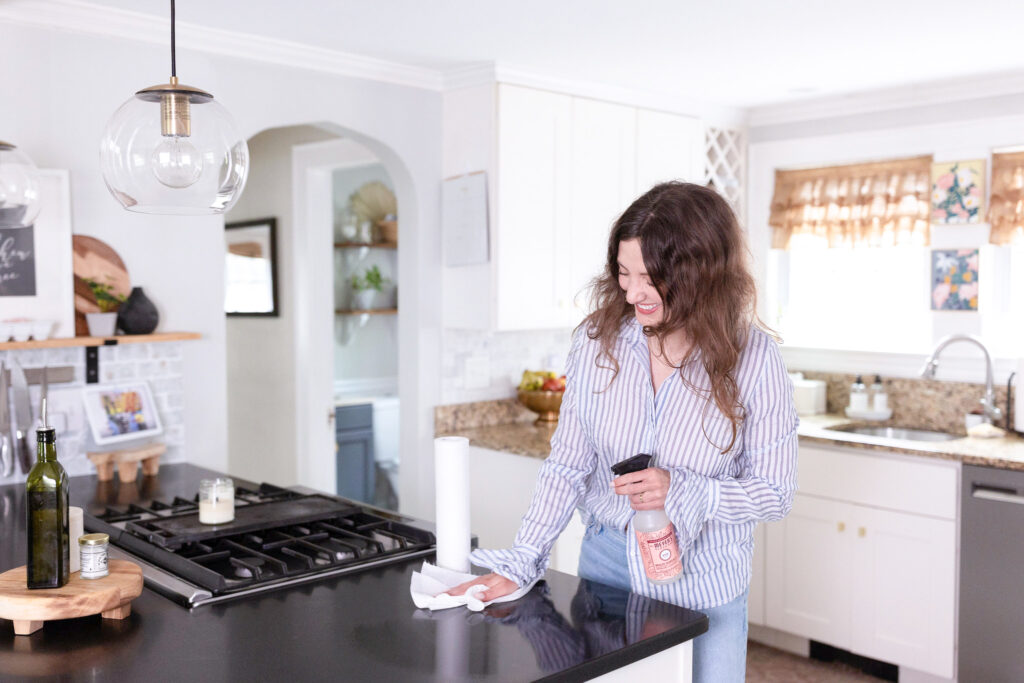

4) Multi-purpose cleaner
The classic combination of baking soda and vinegar stars in the household multi-purpose cleaning spray. Combine 2 teaspoons baking soda with ½ cup of white vinegar and around 10 drops of your favorite essential oil (lemon essential oil works well here) in a spray bottle. Fill to the top with water.
If you’re not into DIY, try Mrs. Meyer’s multi-surface cleaner, which is made with essential oils and plant-based ingredients.

5) Dish towels
I think of paper towels as a scarce commodity, reserved for only the gnarliest of cleaning jobs, like wiping up my cat’s puke after he’s eaten too much wet food. I try to lean on dish towels for most cleaning jobs and every day counter wipe-downs because they can be thrown in the wash and reused. These Floursack kitchen towels are my absolute favorite.

6) Reusable and recycle paper towels
If you absolutely must use paper towels, consider buying the reusable or recycled variety. These Seventh Generation paper towels are made from at least 50% post-consumer recycled materials, meaning they were recycled from products used by people like you and me.
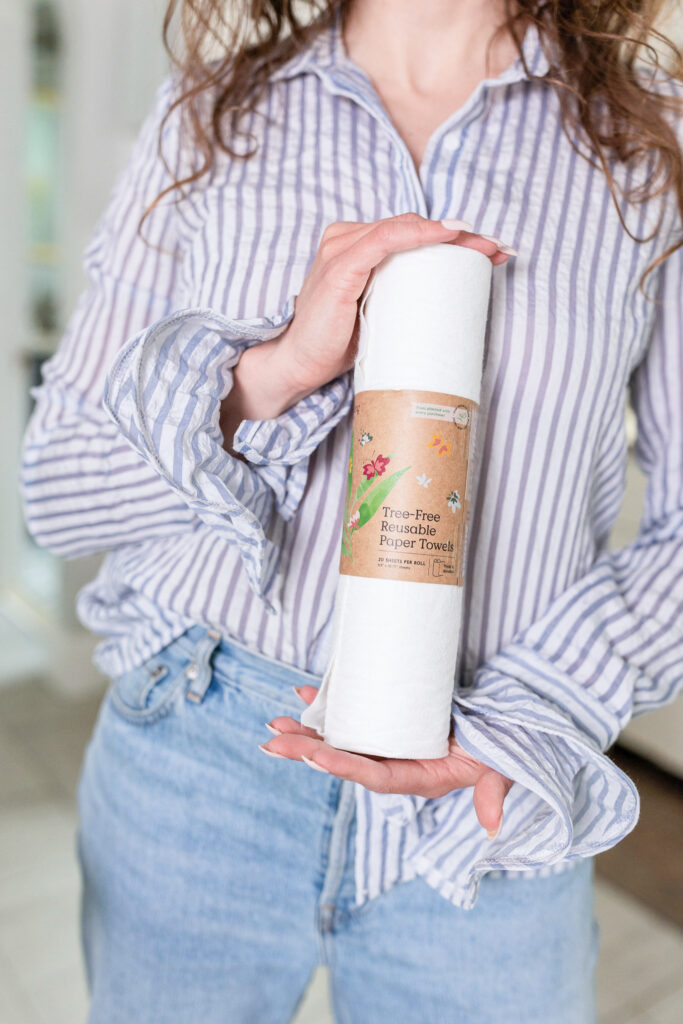

For those that are more hardcore, try reusable paper towels that you can put in the wash after use. I like these reusable paper towels from Grove Collaborative.

7) Wood cutting board
I prefer a wood cutting board to plastic because they last and are as food-safe than plastic–if not more so. In fact, the small knife cuts and nicks that appear over time on a plastic cutting board can be a major haven for bacteria. As long as you are hand-washing your cutting board, letting it air dry, and maintaining it properly you shouldn’t have any issues.
8) Reuse plastic bags and packaging
I love Trader Joe’s. I don’t love how it seems almost all their products are wrapped in plastic–including a lot of produce! To avoid throwing away all this plastic, I reuse many of the plastic bags from things like trail mix, dried fruit and other snacks. These can be reused as sandwich bags, freezer storage, and much more.

9) Paper sandwich bags
If you are regularly packing sandwiches, make the easy switch to recyclable paper sandwich bags. We find that we actually use these paper bags for a number of odd jobs around the kitchen, including seed storage from the garden year-to-year.
10) Ditch the coffee pods
The billions of non-recyclable, non-biodegradable plastic K-cups sitting in landfills eventually led Keurig founder to publicly admit his regret for ever starting the company. In my humble opinion, coffee pods also make a terrible cup of coffee. It’s time to ditch the pod in 2021. If you’re looking for a coffee machine that requires as little mental effort as possible, there are plenty of alarm-clock style models now that will grind and brew the beans automatically at a set time every day–without you having to do anything.

11) Bamboo cutlery
Speaking of packing lunches, I recommend carrying a bamboo cutlery set for eating at the office and on the hiking trail. No more having to scramble for a flimsy plastic fork from your car’s center console. Who knows how long that’s been there?

12) Alternative plastic wrap
Aside from the fact that I can never get plastic wrap to work for me, it’s pretty wasteful as a single use plastic. Use beeswax reusable food wrap in place of plastic wrap. I like the brand Bee’s Wrap, although I did buy Trader Joe’s version recently and have been liking it as well.
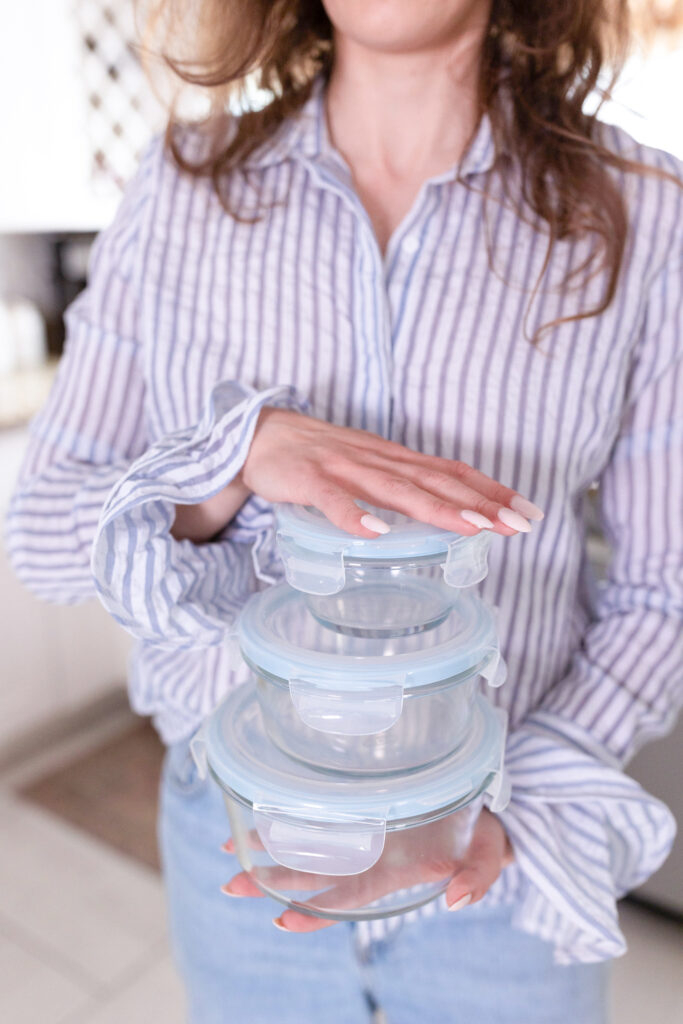

13) Store food in glass containers safely
Sustainability considerations aside, storing food in plastic may potentially be harmful to your health. Consider storing leftovers in glass whenever possible. I like these glass containers, which are durable and come in silicone sleeves so you don’t have to worry about shattering them.
14) Freeze everything
Speaking of food storage, it’s worth considering food waste in our discussion of sustainability. This may seem fairly obvious on its face, but it took me a while to figure out: most food can be frozen for future use. If something is about to spoil in the refrigerator, pop it in the freezer. Can you throw the kale that is on its last legs in the freezer to be used in future smoothies? What about that cookie dough that you can seem to bake just now? Freeze it for when the munchies hit at 12 a.m.
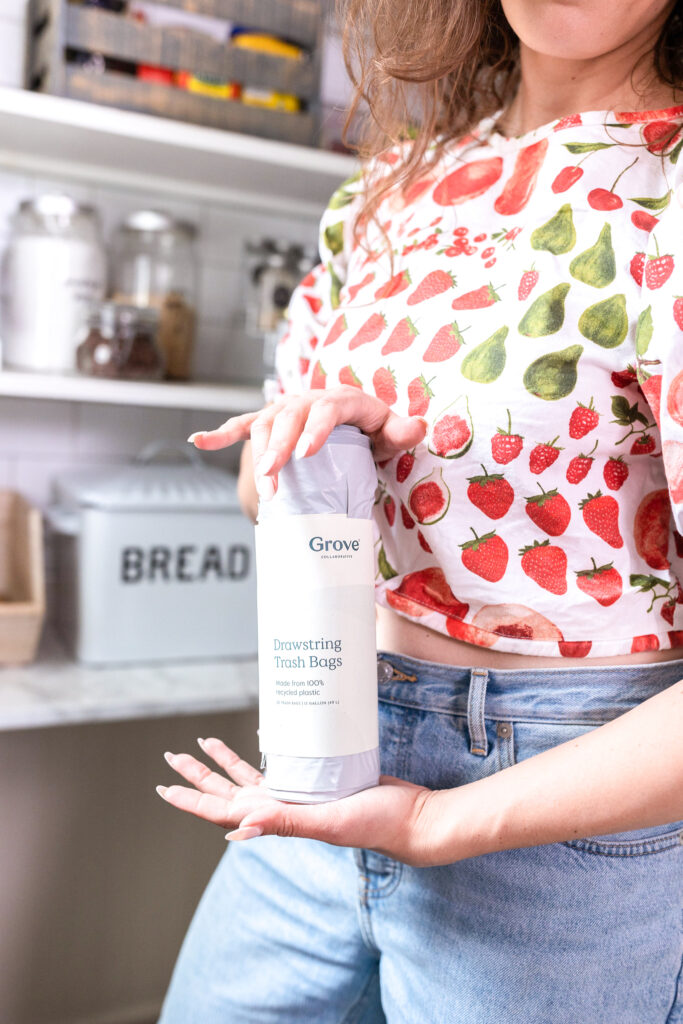

15) Recycled plastic trash bags
Every time you throw away your trash, you’re also throwing away a plastic trash bag that will take a while to decompose. Minimize your impact by purchasing 100% recycled plastic trash bags.
Want more sustainable goodness?
Have any other ideas for a more sustainable bathroom? I’d love to hear them! Follow me on Instagram for more sustainability tips and stay tuned for more in the 2021 sustainability series.
Ready to move on to the bathroom? Read how to upgrade your bathroom to be more sustainable.
